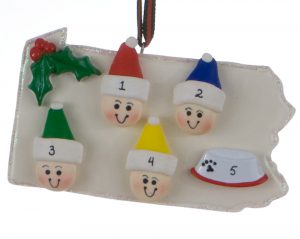Groundhog Day: The History & Facts You Didn’t Know
Posted January 18, 2017 in Holiday Traditions by Dianne Weller

Have you ever wondered how and when the tradition of Groundhog Day began? Join us as we explore the history and facts behind this great American pastime!
Groundhog Day is held annually on February 2 in Punxsutawney, Pennsylvania. According to the Groundhog Day tradition, if the groundhog, Punxsutawney Phil, sees his shadow after he comes out of his hole, there will be six more weeks of winter. On the other hand, if the groundhog doesn’t see his shadow, it means we will be having an early spring.
I’ve always enjoyed the tradition surrounding Groundhog Day. It’s always exciting to see if Punxsutawney Phil will predict six more weeks of snow, or an early spring! However, not many people know the history behind this classic American tradition. That’s why I’ve decided to put together this Groundhog Day guide to help give you some valuable information behind this great event!
The History Of Groundhog Day

The history of Groundhog Day dates back to February 2, 1887. Although the origins of the day are unclear, many people believe that Groundhog Day originated from an ancient European weather lore where the weather was predicted by a badger or sacred bear, rather than a groundhog.
Groundhog Day also has some religious origins with its roots based in the ancient Christian tradition of Candlemas Day, which is also celebrated on February 2. The tradition of Candlemas Day begins when the clergy bless and distribute candles needed for the winter months, and these candles are used to represent how long and cold the rest of winter will be. The Germans expanded on this tradition and began using an animal as a way to predict the weather.
It’s said that in 1887 a group of Punxsutawney groundhog hunters called the local groundhog club and declared that Punxsutawney Phil would be America’s only weather-forecasting animal. Since then, other towns have tried to replicate Punxsutawney Phil and have their own weather-predicting animals, such as Birmingham Bill and Staten Island Chuck, but none are as famous as Punxsutawney’s groundhog.
5 Facts You May Not Have Known About Groundhog Day
- Since the start of Groundhog Day, Punxsutawney Phil has seen his shadow 102 times. During this time period, there were also 18 times that he didn’t see his shadow, while there are nine years that show no record of Punxsutawney Phil’s forecast.
- Since the release of Groundhog Day, a 1993 film featuring Bill Murray, crowds nearing 30,000 people have visited Punxsutawney, Pennsylvania to witness this cherished American event.
- Tradition has it that if Punxsutawney Phil sees his shadow, there will be six more weeks of winter. If he doesn’t we will have an early spring. Scientists have said that groundhogs actually come out of their holes during this time of year, not to see their shadows, but to search for a mate.
- Legend has it that Punxsutawney Phil was named after the British king, King Phillip. Previously, Punxsutawney Phil was known as Br’er Groundhog.
- According to the U.S. National Climatic Data Center, Punxsutawney Phil’s weather predictions are only right about 40 percent of the time.
Want to know more about the groundhog who predicts the weather on Groundhog Day? Be sure to check out our “Weather Capital Of The World” post as we’ve got the inside scoop on Punxsutawney Phil and much more!
